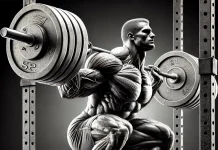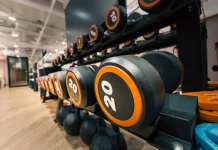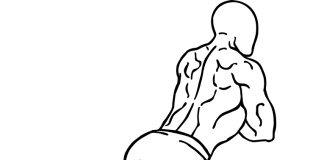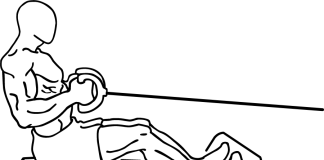Last Updated on September 24, 2014
The Romanian Deadlift (RDL) is a powerful lower-body exercise known for its ability to build strength, power, and definition in the hamstrings, glutes, and back. Unlike the traditional deadlift, the RDL focuses on hip hinge mechanics, providing a more isolated hamstring stretch and activation. In this guide, we’ll explore the step-by-step technique, benefits, common mistakes, exercise variations, and everything you need to know to get the most out of this move.
Why Should You Add the Romanian Deadlift to Your Routine? The Romanian Deadlift is an exceptional exercise for several reasons:
- Hamstring Development: The RDL is known for effectively targeting and strengthening the hamstrings, which support lower-body power and stability.
- Glute Activation: RDLs emphasize glute contraction, helping build stronger, more defined glutes.
- Improves Posterior Chain Strength: The RDL trains the muscles along the back of the body, known as the posterior chain, critical for balance, posture, and athletic performance.
- Functional Fitness: Practicing the hip hinge motion improves movement mechanics, benefiting daily activities and athletic pursuits.
Muscles Worked During the Romanian Deadlift
- Hamstrings: Primary muscle engaged, responsible for the bending motion and control during the eccentric (lowering) phase.
- Glutes: Engage to extend the hips and stabilize the pelvis.
- Erector Spinae (Lower Back): Assists in maintaining a neutral spine and hip stability throughout the exercise.
- Calves: Support the ankle joint during the lift.
- Core and Stabilizers: These muscles brace the body, keeping you balanced and aligned.
How to Perform the Romanian Deadlift: Step-by-Step Guide
- Starting Position: Place a barbell in front of your feet. Stand with feet hip-width apart and knees slightly bent.
- Grip the Barbell: Bend forward and grasp the barbell with a grip just slightly wider than shoulder-width. Ensure that your shoulders are down and back, and your spine remains straight.
- Engage Your Core: Tighten your core muscles to support your spine, and pull your shoulder blades back to maintain a straight back.
- Begin the Lift: Keeping a slight bend in your knees, press through your heels, and engage your glutes as you drive your hips forward, lifting the barbell. The motion should come from your hips, not your lower back.
- Stand Tall: Lift until you’re fully standing, with the barbell resting against your thighs, but avoid leaning backward.
- Lowering the Bar: Push your hips back as you lower the bar in a controlled motion, maintaining a slight bend in the knees and a neutral spine. Lower until you feel a stretch in your hamstrings, typically when the bar reaches just below the knees.
- Return to Start Position: Drive your hips forward, engaging the glutes and hamstrings as you return to a standing position, and repeat.
Breathing Tips for the Romanian Deadlift
- Inhale deeply before beginning each rep to brace your core.
- Exhale as you lift the bar, focusing on engaging your glutes and core.
- Inhale as you lower the bar, maintaining control.
Common Mistakes and How to Avoid Them
- Rounding the Back: A rounded back during the RDL is a common mistake that can lead to injury. Focus on keeping the spine neutral, and always engage the core.
- Locking the Knees: Over-straightening the legs can transfer strain to the lower back. Keep a slight bend in the knees to protect your lower body.
- Overextending the Lower Back: Avoid leaning backward at the top of the movement, which can place undue stress on the lower back.
- Moving Too Quickly: The Romanian Deadlift is most effective with a slow, controlled movement. Rushing through reps reduces the engagement and increases injury risk.
- Using Too Much Weight: Start light. Using too much weight too soon compromises form and reduces effectiveness. Begin with a manageable load, focusing on technique.
Tips for Perfect Form
- Use the Hip Hinge: Remember, the motion should primarily come from your hips rather than your knees. Imagine pushing your hips back to create the movement.
- Engage Your Core: A strong core will help protect your spine and maintain proper posture throughout.
- Avoid Straining the Neck: Keep your neck neutral by looking at a point on the floor a few feet in front of you. Avoid tilting your head up or down.
Variations of the Romanian Deadlift For added variety, consider these RDL variations to target slightly different muscle groups or challenge your balance and coordination:
- Dumbbell Romanian Deadlift: Substitute a pair of dumbbells for the barbell, allowing a greater range of motion and more flexibility.
- Single-Leg Romanian Deadlift: Perform the RDL on one leg, improving balance and focusing on unilateral strength. This variation requires core stability and control.
- Trap Bar Romanian Deadlift: Using a trap bar can make the movement more comfortable on the lower back while still engaging the hamstrings and glutes.
- Elevated Romanian Deadlift: Stand on a platform to increase the range of motion, making the stretch more intense on the hamstrings.
Incorporating the Romanian Deadlift into Your Routine The RDL is versatile and fits well into various workout programs:
- Leg Day: Add the RDL to your leg routine to target hamstrings and glutes, pairing it with exercises like squats and lunges.
- Full-Body Day: The RDL works well in full-body routines, engaging the posterior chain while also requiring core stability.
- Strength-Building Program: Include RDLs in strength-focused workouts for lower-body power and posterior chain strength.
Reps and Sets Recommendations
- For Beginners: Start with 3 sets of 8-10 reps using light weights to master form.
- Intermediate to Advanced: Aim for 4 sets of 10-12 reps with a moderate to heavy load, focusing on slow, controlled movement.
How the Romanian Deadlift Differs from the Conventional Deadlift Understanding the differences between the RDL and the standard deadlift can help you decide when and how to use each exercise:
- Movement Focus: The RDL emphasizes a hip hinge, placing greater load on the hamstrings and glutes, whereas the conventional deadlift incorporates more knee bending, making it a more full-body lift.
- Range of Motion: RDLs typically involve a shorter range of motion than conventional deadlifts, with the bar often stopping just below the knees.
- Strength Emphasis: RDLs focus primarily on the hamstrings and glutes, while conventional deadlifts target a broader range of muscles, including the quadriceps.
Safety Considerations The Romanian Deadlift can be highly beneficial when performed correctly, but safety is essential:
- Warm Up Properly: Prior to starting, do a dynamic warm-up to loosen up your hamstrings and back.
- Start with Light Weights: Begin with lighter weights to learn the movement pattern, especially if you’re new to the exercise.
- Pay Attention to Form: Quality of movement matters more than quantity. Don’t rush; focus on a slow and controlled pace.
- Consider Assistance: If you’re lifting heavy, consider using lifting straps or a weight belt to support your grip and core.
Frequently Asked Questions
- Can beginners do the Romanian Deadlift? Yes, but it’s essential to start with lighter weights or even just a bar to learn the form properly. Working with a trainer for a few sessions can be beneficial to ensure good technique.
- How often should I perform RDLs? For optimal results and recovery, include the RDL in your routine once or twice a week, allowing at least 48 hours of rest for the hamstrings and glutes between sessions.
- What’s the ideal grip for Romanian Deadlifts? A shoulder-width grip works best, providing stability and balance. For heavier lifts, you can try an alternate (one overhand, one underhand) or mixed grip.
- Is the RDL safe for people with back issues? With proper form and lighter weights, the RDL can actually help strengthen the lower back. However, if you have a history of back problems, consult a professional before adding it to your routine.
- What’s the difference between a Romanian Deadlift and a Stiff-Legged Deadlift? While both exercises look similar, the stiff-legged deadlift requires less knee bend, placing more tension on the hamstrings and lower back. In contrast, the RDL involves a slight bend in the knees, focusing more on the hip hinge.
The Romanian Deadlift is a powerful, effective movement for building lower-body strength, particularly in the hamstrings and glutes. With its unique hip hinge focus, the RDL provides functional strength benefits and contributes to better posture, balance, and athletic performance. By practicing correct form, starting with manageable weights, and gradually progressing, you’ll enjoy the full advantages this exercise offers.
Whether you’re new to strength training or looking to add a new move to your leg day, the Romanian Deadlift is an excellent choice for a well-rounded, powerful lower body.
Ready to incorporate the Romanian Deadlift into your routine? Focus on mastering the hip hinge, engage your core, and watch your strength and stability improve rep by rep.

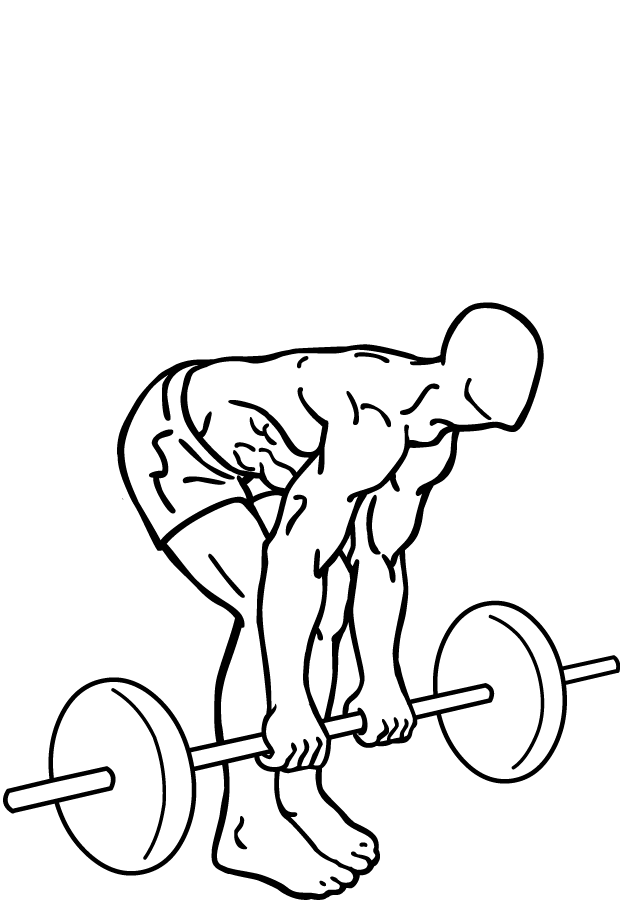
Exercise images by Everkinetic.



